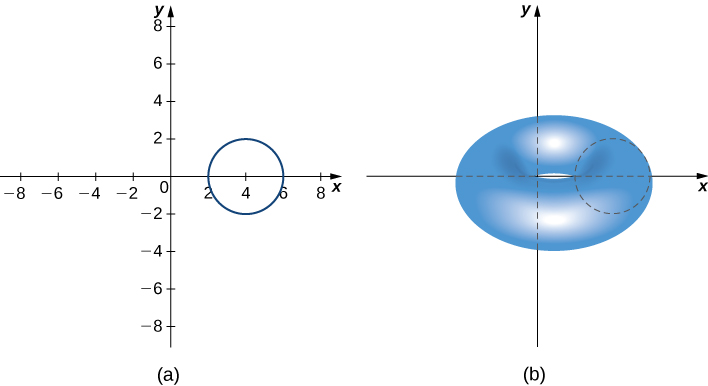| << Chapter < Page | Chapter >> Page > |
This section ends with a discussion of the theorem of Pappus for volume , which allows us to find the volume of particular kinds of solids by using the centroid. (There is also a theorem of Pappus for surface area, but it is much less useful than the theorem for volume.)
Let R be a region in the plane and let l be a line in the plane that does not intersect R . Then the volume of the solid of revolution formed by revolving R around l is equal to the area of R multiplied by the distance d traveled by the centroid of R.
We can prove the case when the region is bounded above by the graph of a function and below by the graph of a function over an interval and for which the axis of revolution is the y -axis. In this case, the area of the region is Since the axis of rotation is the y -axis, the distance traveled by the centroid of the region depends only on the x -coordinate of the centroid, which is
where
Then,
and thus
However, using the method of cylindrical shells, we have
So,
and the proof is complete.
□
Let R be a circle of radius 2 centered at Use the theorem of Pappus for volume to find the volume of the torus generated by revolving R around the y -axis.
The region and torus are depicted in the following figure.

The region R is a circle of radius 2, so the area of R is units 2 . By the symmetry principle, the centroid of R is the center of the circle. The centroid travels around the y -axis in a circular path of radius 4, so the centroid travels units. Then, the volume of the torus is units 3 .
Let R be a circle of radius 1 centered at Use the theorem of Pappus for volume to find the volume of the torus generated by revolving R around the y -axis.
units 3

Notification Switch
Would you like to follow the 'Calculus volume 1' conversation and receive update notifications?